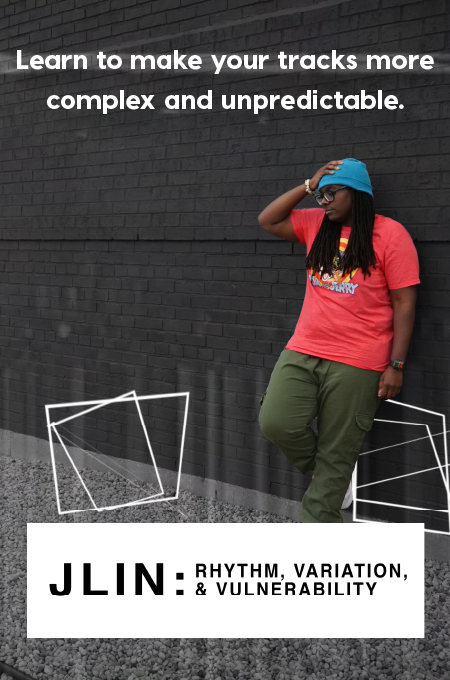+ This is an excerpt from Kimbra’s Vocal Creativity, Arranging, & Production course. To access this lesson, plus hundreds more videos and tutorials on production, songwriting, composing, arranging, beat making, and mixing, subscribe to Soundfly.
In the above video, courtesy of her online course, Kimbra emphasizes the idea of developing a musical vocabulary so you can better communicate both to yourself and others what you’re trying to achieve in your music. A wide vocabulary can be a source of inspiration, encouraging intentionality and pushing you to try new things.
Kimbra talks about a technical vocabulary, how you achieve a certain sound, but also the idea of a poetic vocabulary, one that’s more descriptive and inspiring. You’ll need both to communicate with yourself and with others you collaborate with how to achieve the specific ideas you’re going for.
Technical Vocabulary
A technical vocabulary is the language you might use to describe elements of music in terms of the specific tools used to create it.
So, for instance, you might describe pitches as low or high, chords according to names like major sevenths or minor ninths, or EQ in terms of low-pass filters or cutoff frequencies. This is the sort of language you can learn by studying a new skill.
Let’s take Kimbra’s song “Past Love” as an example.
Using this song as an example, we could use a technical vocabulary to describe its structure as in the diagram below:

We might describe the verse instrumentation as drums, bass, and synth, and the lead vocals as fairly dry given they don’t have a lot of reverb or effects on them (except certain words). These are largely objective descriptions of the song.
Poetic Vocabulary
A poetic vocabulary, on the other hand, is limitless and undefined. It might stem from how a song makes you feel, what emotions it brings up, what colors, imagery, or memories it conjures. A poetic vocabulary might relate to other works of art or abstract ideas and themes.
Some poetic vocabulary is really obvious (e.g. music that sounds “underwater” is generally now accepted to be filtered), but lots of it can be subtle, subjective, and open to interpretation. That’s why it’s useful, because it can inspire you or your collaborators to think differently about things.
In our time working with Kimbra, we heard her describe music in terms of lighting and filters, topography such as hills, forests, or valleys, films and film characters, textures such as metallic or wooden, and much more.
- How would you approach a melody differently if you wanted it to feel “misunderstood?”
- What does music that’s “in sepia tones” sound like?
- How might that bass part sound if it’s meant to be “tightly packed like a dark forest?”
If we look at “Past Love” through a more poetic lens, we might end up with some descriptions like:

Kimbra recommends building your vocabulary in three ways:
- Active, “prayerful” listening.
- Experimentation with different tools and approaches.
- Being a curious observer of the world.

Take a minute to choose a song of Kimbra’s and try to describe it using both technical and poetic vocabulary. Feel free to draw from the Kimbra songs playlist from the course.
As you listen, try to answer some of the following questions:
Technically, can you make out how certain sounds were created? Is there a lot of compression on a sound, or is a cello sound made using a specific bowing technique? How does the mix sit? You might not be able to get everything, but see what you can discover through active, focused listening.
Poetically, what are some of the words you might use to describe the sounds and the feelings they give you?
If you want to take this activity even a step further, do the same thing for one of your own songs. If you’re a Soundfly subscriber, feel free to share it with us in the #vocal-production channel on Slack!
Ready to Learn From Kimbra Herself?
Grammy Award winning star and world-renowned artist and songwriter, Kimbra opens up her creative process to students for the first time in this comprehensive course with Soundfly. Explore how she finds inspiration, improvises over an idea, pinpoints the focus for a song, and expertly produces compelling tracks with her innovative approaches to singing, arranging, production, and more. Whether you’re an aspiring vocalist yourself or a producer interested in treating the voice as one of many tools in your creative shed, this one-of-a-kind course will help you develop new methods for making compelling music.
Join Kimbra: Vocal Creativity, Arranging, and Production today.



